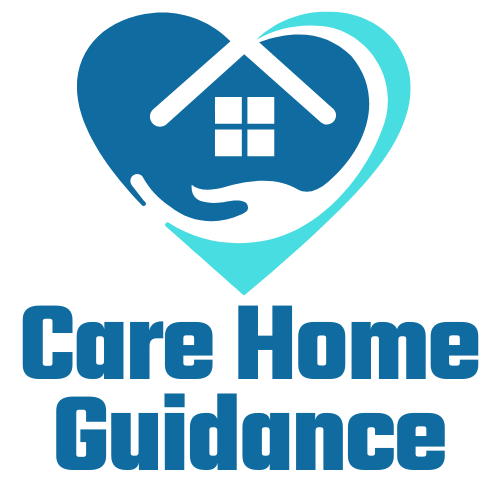Search for the Best Care Homes
in your Area NOW

Why Healthcare Homes are revolutionizing patient care and well-being. Providing personalized care, support, and a comfortable living environment for improved quality of life.
In today’s world, healthcare has become a critical aspect of our lives, and more and more people are searching for innovative solutions to enhance their quality of life. This is where healthcare homes step in, as they are revolutionizing patient care and well-being. By providing a holistic approach to healthcare, these homes are improving the overall quality of life for patients. With the focus on personalized care and a comfortable living environment, healthcare homes are ensuring that patients receive the best possible treatment, support, and assistance. Through their dedication and commitment, healthcare homes are reshaping the way we perceive healthcare, ultimately leading to a happier and healthier society. So, let’s explore the positive impact healthcare homes are having on patients’ lives and why they are the future of healthcare.
Improving Access to Care
Reduced wait times for appointments
When it comes to accessing healthcare, timely appointments are crucial. With reduced wait times for appointments, individuals can receive the care they need when they need it. This not only helps prevent conditions from worsening but also promotes early detection and intervention. By implementing efficient scheduling systems and optimizing healthcare processes, healthcare providers can ensure that patients are seen promptly, improving access to care and ultimately enhancing patient outcomes.
Increased availability of healthcare professionals
Ensuring that there are enough healthcare professionals to meet the growing demands of patients is essential for improving access to care. By increasing the availability of healthcare professionals, individuals can have timely appointments and receive the attention they need. This can be achieved through strategies such as hiring more staff, implementing flexible work hours, and providing incentives to attract and retain healthcare professionals in underserved areas. By addressing the shortage of healthcare professionals, more individuals will have access to quality care, improving both their health outcomes and overall satisfaction.
Improved coordination of care
One of the key elements in providing effective healthcare is the coordination of care. Improved coordination among healthcare providers ensures that patients receive comprehensive and seamless care across different settings. This can be achieved through the implementation of advanced electronic medical record systems that facilitate the sharing of information and enhance communication between healthcare professionals. By establishing effective care networks and fostering collaboration, healthcare providers can ensure that patients receive the right care at the right time, reducing the risk of medical errors and improving overall health outcomes.
Person-Centered Care
Tailored care plans to meet individual needs
Each individual has unique healthcare needs, and providing tailored care is crucial for effective treatment. By creating personalized care plans that take into account a patient’s medical history, personal preferences, and future goals, healthcare providers can ensure that they address the specific needs of each patient. This personalized approach empowers individuals and helps them actively participate in their own care, leading to improved health outcomes and overall satisfaction.
Focus on patient preferences and goals
Patient preferences and goals play a significant role in determining the success of healthcare interventions. By taking the time to understand a patient’s preferences, healthcare providers can tailor their care plans accordingly, ensuring that the patient feels heard and valued. This can include discussing different treatment options, involving the patient in decision-making processes, and providing education and resources to support informed choices. By acknowledging and respecting patient preferences, healthcare providers can foster a stronger patient-provider relationship and promote better health outcomes.
Increased involvement in decision-making
In the journey towards better health, it is essential for individuals to be active participants in their own care. Empowering patients to make informed decisions about their health promotes a sense of ownership and leads to better adherence to treatment plans. Healthcare providers can encourage patient involvement by providing clear and understandable information, explaining the risks and benefits of different options, and actively involving patients in discussions about their care. By facilitating shared decision-making, healthcare providers can enhance patient outcomes and foster a sense of empowerment and satisfaction among patients.
Enhanced Continuity of Care
Centralized medical records
Centralized medical records play a vital role in ensuring the seamless coordination of care across different healthcare providers and settings. By consolidating medical information in a centralized system, healthcare professionals can easily access and review patient records, leading to more informed decision-making and better continuity of care. This also reduces the risk of duplicate tests or procedures, improves communication between healthcare providers, and ultimately enhances the overall patient experience.
Better communication between healthcare providers
Communication among healthcare providers is essential for achieving enhanced continuity of care. Through effective communication channels, healthcare professionals can share vital patient information, collaborate on treatment plans, and ensure that transitions between care settings are smooth and well-coordinated. This can include regular meetings, the use of secure messaging systems, and the establishment of care coordination teams. By improving communication among healthcare providers, patients can experience seamless transitions between healthcare settings, leading to improved health outcomes and reduced healthcare errors.
Seamless transitions between care settings
When individuals require care across different settings, it is crucial to ensure that the transitions between these settings are seamless and well-coordinated. Whether it’s moving from a hospital to a rehabilitation center or from a primary care clinic to a specialist’s office, efficient care transitions are vital for patient safety and well-being. Through effective communication, proper planning, and the use of care transition protocols, healthcare providers can ensure that patients receive continuous and coordinated care. This reduces the risk of medical errors, improves medication management, and enhances overall patient satisfaction.
Improved Health Outcomes
Early detection and prevention of diseases
Early detection and prevention of diseases play a significant role in improving health outcomes. By focusing on proactive measures such as regular screenings, health assessments, and preventive interventions, healthcare providers can identify potential health issues before they escalate. This early detection allows for timely treatment, reducing the burden of illness and improving patient outcomes. Additionally, by promoting lifestyle modifications and education on risk reduction, healthcare providers can empower individuals to take control of their health and prevent the onset of chronic conditions.
Better management of chronic conditions
Chronic conditions, such as diabetes, heart disease, and asthma, require ongoing management and support. By implementing comprehensive care plans and providing education and resources, healthcare providers can help individuals effectively manage their chronic conditions. This can include personalized treatment plans, regular monitoring of health markers, and collaboration with specialists as needed. By improving the management of chronic conditions, healthcare providers can reduce hospitalizations, emergency room visits, and complications, ultimately leading to better health outcomes and improved quality of life for patients.
Reduced hospital readmissions
Reducing hospital readmissions is a crucial component of improving health outcomes. By implementing strategies such as comprehensive discharge planning, follow-up care coordination, and medication management, healthcare providers can decrease the likelihood of patients being readmitted to the hospital. This includes ensuring that patients understand their care instructions, have access to necessary resources, and receive timely follow-up appointments. By focusing on preventive measures and providing effective post-hospitalization support, healthcare providers can foster better recovery, reduce healthcare costs, and improve overall patient satisfaction.
Holistic Approach to Care
Emphasis on physical, mental, and emotional well-being
A holistic approach to care recognizes that physical, mental, and emotional well-being are interconnected, and all aspects should be addressed to promote overall health. By integrating mental health services, emotional support, and lifestyle counseling into healthcare plans, providers can take a proactive approach to care. This includes addressing social determinants of health, promoting healthy lifestyle habits, and providing access to support networks. By treating the whole person, healthcare providers can improve patient outcomes and enhance overall well-being.
Integration of complementary therapies
Complementary therapies, such as acupuncture, massage therapy, and meditation, can play a valuable role in promoting health and well-being. By incorporating these therapies into care plans, healthcare providers can offer individuals additional options for managing their conditions and achieving optimal health. Complementary therapies can provide pain relief, reduce stress, improve sleep, and enhance overall quality of life. By adopting a holistic approach that integrates both conventional and complementary therapies, healthcare providers can offer comprehensive care and cater to individual preferences and needs.
Support for overall quality of life
Healthcare should not solely focus on treating medical conditions but also on supporting individuals in achieving a high quality of life. By considering factors such as social support, access to resources, and cultural beliefs, healthcare providers can address the broader aspects that impact a person’s well-being. This can involve connecting individuals with community resources, providing information on support groups or counseling services, and offering guidance on maintaining healthy relationships. By supporting overall quality of life, healthcare providers can positively impact patient outcomes and foster resilient and thriving communities.
Effective Care Management
Care coordination between healthcare professionals
Effective care management requires seamless coordination and collaboration among healthcare professionals. By establishing care coordination teams, healthcare providers can ensure that all members involved in a patient’s care are working cohesively towards common goals. This can involve regular meetings, the use of shared care plans, and clear communication channels. By facilitating interdisciplinary collaboration, healthcare providers can optimize treatment plans, reduce the risk of medical errors, and improve patient outcomes.
Regular monitoring of patient progress
Regular monitoring of patient progress is essential for effective care management. By assessing health markers, tracking medication adherence, and evaluating treatment outcomes, healthcare providers can identify any necessary modifications to care plans and intervene promptly. This can involve regular follow-up appointments, use of remote monitoring technologies, and patient-reported outcome measures. By monitoring patient progress, healthcare providers can make data-driven decisions, ensure that treatment plans are effective, and provide timely interventions, leading to improved health outcomes.
Optimization of treatment plans
Optimizing treatment plans is vital for effective care management. By regularly reviewing and adjusting care plans based on patient progress and current evidence, healthcare providers can ensure that individuals receive the most appropriate and effective interventions. This can involve medication adjustments, treatment plan modifications, and referrals to specialists or additional services. By optimizing treatment plans, healthcare providers can improve patient outcomes, enhance medication adherence, and provide tailored care that addresses the unique needs of each individual.
Patient Education and Empowerment
Education on self-care and disease management
Education is a powerful tool in empowering individuals to take control of their health. By providing comprehensive education on self-care, disease management, and prevention strategies, healthcare providers can equip patients with the knowledge and skills they need to make informed decisions. This can include explaining treatment options, teaching self-monitoring techniques, and providing resources and practical tips for managing conditions. By educating patients, healthcare providers foster self-efficacy and enhance patient outcomes, preventing complications and promoting healthier lifestyles.
Helping patients become active participants in their own care
Encouraging patients to become active participants in their own care is crucial for improving health outcomes. By fostering a collaborative relationship with patients, healthcare providers can empower individuals to ask questions, express concerns, and actively engage in their treatment plans. This can involve shared decision-making, setting achievable goals, and encouraging patients to keep track of their progress. By promoting self-advocacy and patient engagement, healthcare providers can enhance treatment adherence, reduce healthcare disparities, and improve the overall patient experience.
Promotion of health literacy
Health literacy refers to an individual’s ability to understand and effectively use health information. By promoting health literacy, healthcare providers can ensure that patients comprehend their conditions, treatment plans, and the importance of preventive measures. This can involve using clear and accessible language, offering written materials in different formats, and providing opportunities for patients to ask questions. By improving health literacy, healthcare providers empower individuals to make informed decisions and actively participate in their own care, leading to better health outcomes and patient satisfaction.
Reduced Healthcare Costs
Streamlined healthcare processes
Streamlining healthcare processes is essential for reducing costs and optimizing the utilization of resources. By implementing efficient administrative systems, utilizing technology to automate processes, and reducing unnecessary paperwork, healthcare providers can eliminate waste and improve operational efficiency. This can lead to more cost-effective care delivery, reduced administrative burdens, and ultimately, lower healthcare costs for both patients and providers.
Prevention-focused care reduces expensive hospitalizations
Prevention-focused care aims to identify and address health issues before they escalate, preventing the need for expensive hospitalizations. By prioritizing preventive measures such as immunizations, health screenings, and lifestyle interventions, healthcare providers can reduce the occurrence of preventable diseases and conditions. This proactive approach not only improves patient outcomes but also reduces the financial burden associated with emergency or hospital-based care. By investing in prevention, healthcare providers can achieve cost savings and allocate resources more effectively.
Optimized utilization of healthcare resources
Optimizing the utilization of healthcare resources ensures that they are used efficiently and effectively. By implementing strategies such as care coordination, evidence-based practice guidelines, and appropriate utilization of diagnostic tests and procedures, healthcare providers can avoid unnecessary costs and improve patient outcomes. This includes considering the cost-effectiveness of interventions, promoting appropriate medication prescribing practices, and ensuring that healthcare resources are used judiciously. By optimizing resource utilization, healthcare providers can achieve cost savings without compromising the quality of care provided.
Improved Patient Satisfaction
Enhanced patient-provider relationship
A positive patient-provider relationship is key to improving patient satisfaction. By fostering a compassionate, empathetic, and respectful environment, healthcare providers can establish trust and build strong rapport with patients. This includes actively listening to patient concerns, involving them in care decisions, and providing them with the information they need to make informed choices. By prioritizing open communication and genuinely addressing patient needs, healthcare providers can enhance patient satisfaction and create a supportive healthcare experience.
Better communication and understanding
Effective communication is vital for ensuring that patients feel heard, understood, and supported. By using clear and jargon-free language, engaging in active listening, and providing opportunities for patients to express their concerns, healthcare providers can improve communication and understanding. This includes explaining diagnoses and treatment options in a way that is easily comprehensible, checking for patient comprehension, and actively addressing any questions or doubts. By promoting effective communication, healthcare providers foster trust, enhance patient satisfaction, and foster a collaborative healthcare experience.
Recognition and respect for individual needs
Recognizing and respecting the individual needs of patients is crucial for providing patient-centered care and improving satisfaction. Each patient is unique and has specific preferences, beliefs, and cultural backgrounds that influence their healthcare experiences. By acknowledging and integrating these individual needs into care plans, healthcare providers can create a personalized and respectful environment. This includes considering dietary restrictions, religious or spiritual practices, and any special accommodations a patient may require. By valuing diversity and promoting inclusivity, healthcare providers can enhance patient satisfaction and create a welcoming healthcare environment for all patients.
Positive Impact on Communities
Healthy population leads to a thriving community
Investing in healthcare and improving community health has far-reaching impacts beyond individual patients. A healthy population leads to a thriving community by fostering economic growth, improving productivity, and reducing healthcare disparities. When individuals have access to quality care and are empowered to take control of their health, they can actively participate in social, educational, and economic activities, contributing to overall community well-being.
Reduction in healthcare disparities
Healthcare disparities exist when certain populations face inequitable access to care or experience differential health outcomes. By implementing strategies to reduce healthcare disparities, healthcare providers can create a more equitable and inclusive healthcare system. This includes addressing social determinants of health, ensuring culturally competent care, and actively engaging in community outreach initiatives. By reducing disparities, healthcare providers can improve health outcomes for underserved populations and promote a more just healthcare system.
Strengthened social support networks
Healthcare providers play a vital role in strengthening social support networks within communities. By partnering with community organizations, social workers, and other healthcare providers, they can identify and address the social needs of patients. This can include connecting individuals with resources for housing, food assistance, mental health support, and other social services. By incorporating a holistic approach to care that considers the broader social context, healthcare providers can contribute to stronger social support networks, reduce health disparities, and improve community well-being.
In conclusion, healthcare homes are playing a crucial role in improving the quality of life for patients. From reducing wait times for appointments and increasing the availability of healthcare professionals to promoting person-centered care and enhancing continuity of care, healthcare homes are focused on delivering comprehensive and patient-centric services. By adopting a holistic approach to care, improving patient education and empowerment, and effectively managing care, healthcare homes are positively impacting health outcomes, reducing healthcare costs, and improving patient satisfaction. Furthermore, these efforts have a far-reaching impact on communities, leading to a healthier population, reduced healthcare disparities, and strengthened social support networks – ultimately creating thriving communities.

